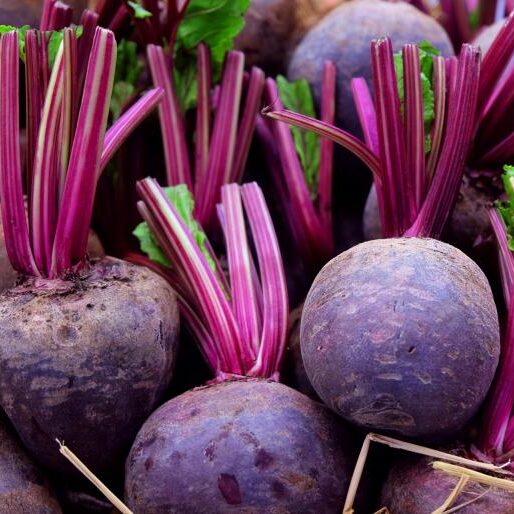Beets
Beta vulgaris (beet) is a species of flowering plant in the
subfamily Betoideae of the family Amaranthaceae
Name - Beet (root vegetable)
The beet is a root vegetable. We learn about its scientific name, botanical classification, variations, and colors.
Culinary Use
The entire beet plant is edible. The beet-root portion can be boiled, roasted, pureed, and juiced. We explore recipes and uses in different cultures.
Nutrition
1 cup of beets contains lots of vitamins and minerals and is low in calories and fat. (16% of Potassium (518 mg 11% DV), Folate (148 mg / 37% DV), Carbohydrates (natural sugar) 9.2 grams)

Beet Cultivation
A cool season crop (spring & fall) grows easily from seed and loves sun. Harvest 45-65 days. Likes pH between 6.0-7.0 alkaline sandy soil in spring, heavier soil in fall.
Body Benefits
Beets improve blood flow, lower blood pressure, and increase detoxification enzymes. Beet juice also helps with inflammation.
Origin & History
Beets originated from the sea beet in the Mediterranean region. The beet root was cultivated in the Middle East in the 8th century B.C.






